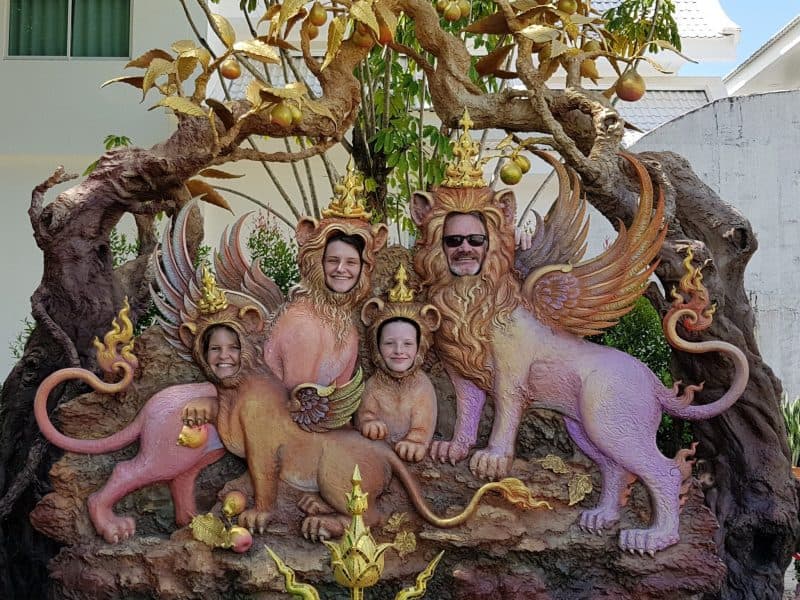Now that we are back in our comfy Chiang Mai house after the Visa Run That Went On and On and On, we are not getting a lot of enthusiasm from the Shermanitas when we talk about more exploring or taking long road trips. But the White Temple in nearby Chiang Rai really was not to be missed. So we compromised and got an early start and made it a day trip. And by “compromise” I mean that we told them we were going and we ignored their groans about the 2.5 hour drive to get there.
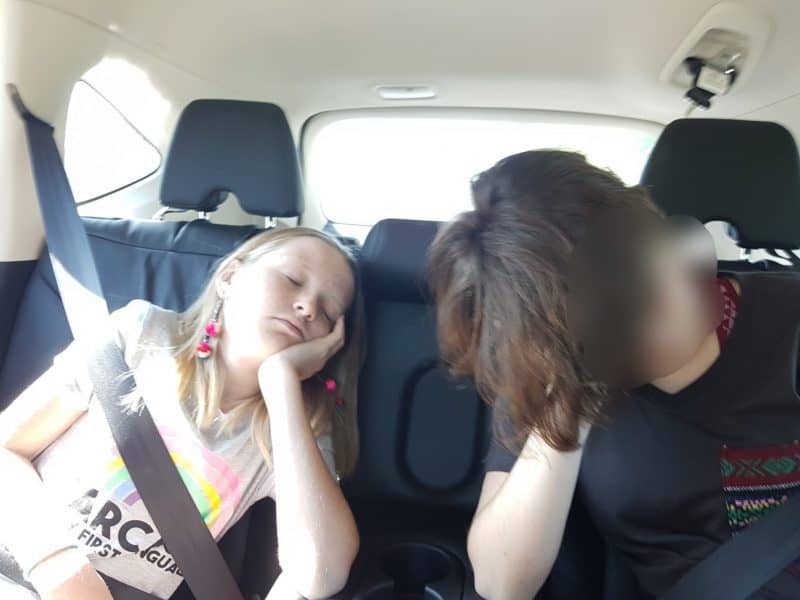
Here are some details about this temple that 1) I copied from the internet and 2) we read to the girls while sitting outside the bathrooms at the temple. We didn’t exactly do our research ahead of time, but it works.
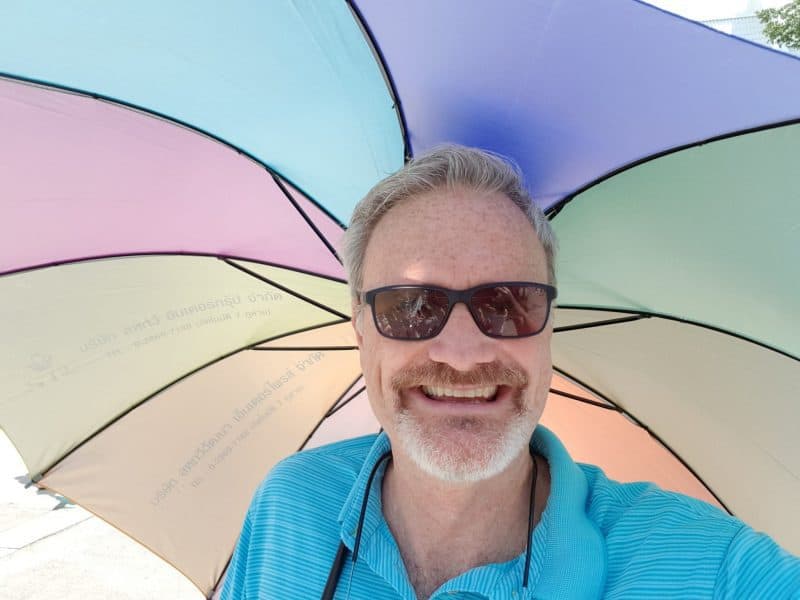
Wat (“temple”) Rong Khun
Wat Rong Khun better known as “the White Temple”, is a unique temple that stands out through the white color and the use of pieces of glass in the plaster, sparkling in the sun. The white color signifies the purity of the Buddha, while the glass symbolizes the Buddha’s wisdom and the Dhamma, the Buddhist teachings.
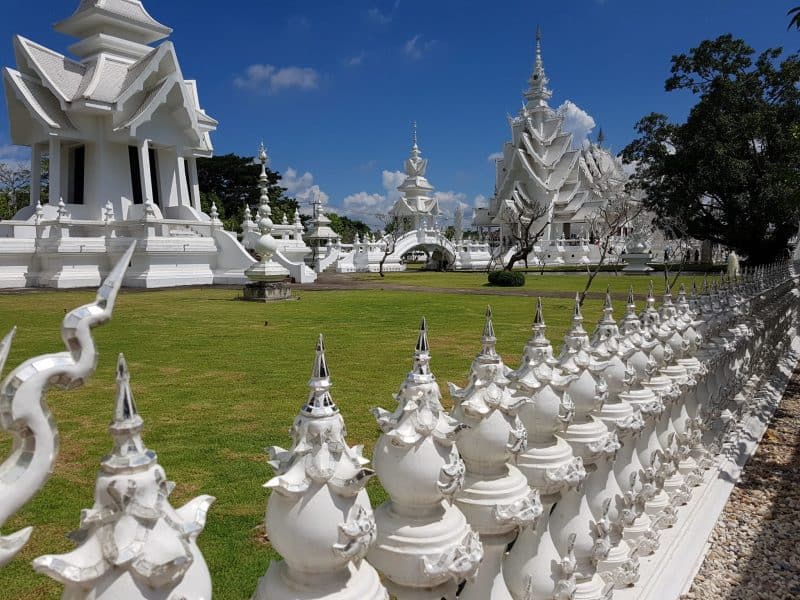
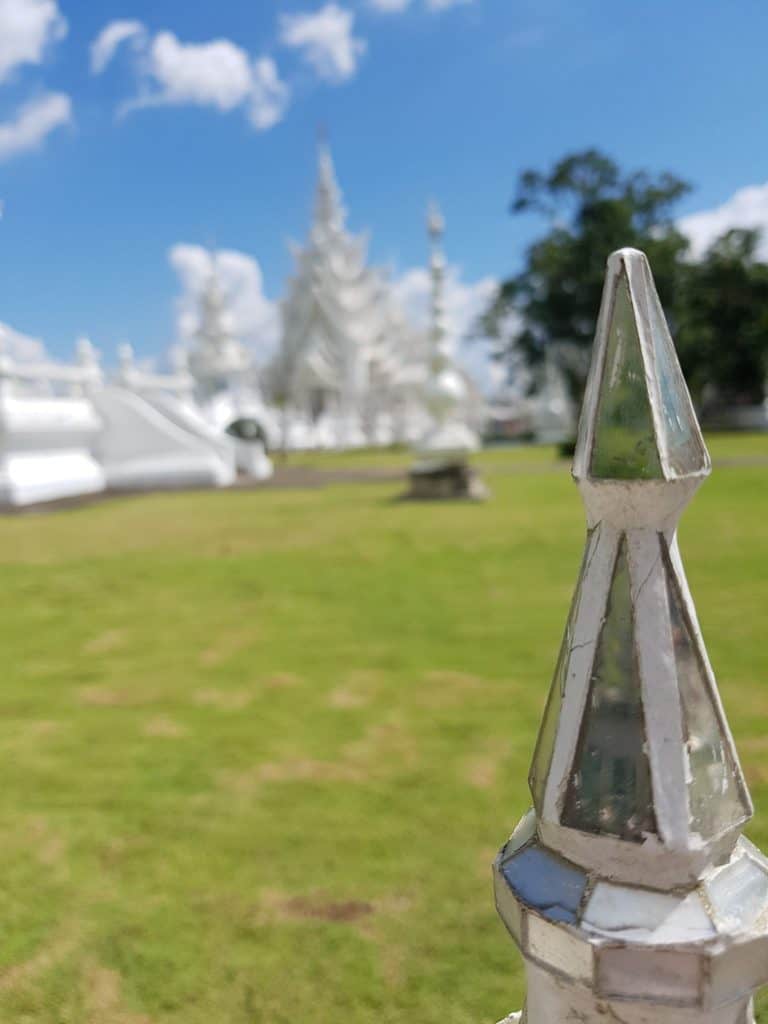
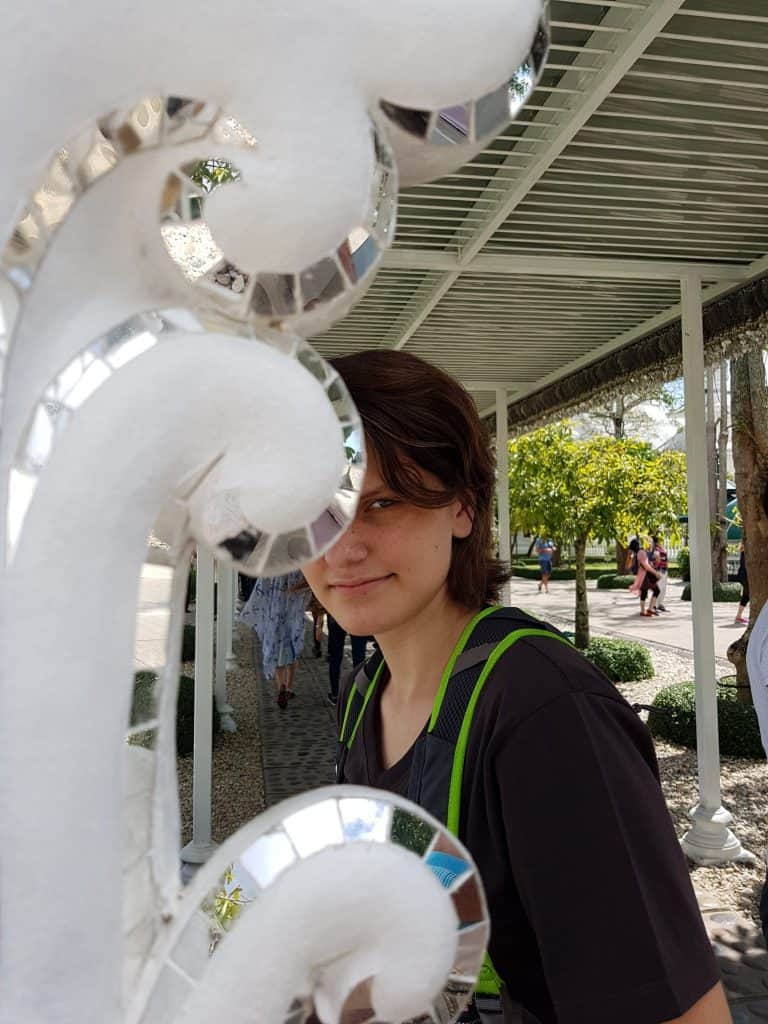
Towards the end of the 20th century, the original Wat Rong Khun was in a very poor state of preservation. Restoration works on the temple started, but had to be halted due to a lack of funds. The Wat Rong Khun was designed by Chalermchai Kositpipat, a famous Thai visual artist, who then decided to completely rebuild the temple and fund the project with his own money. To date the temple is not finished. Eventually there will be nine buildings including an ubosot, a hall to enshrine Buddhist relics, a meditation hall, the monks’ living quarters and an art gallery. The artist gladly accepts donations but in order to be free from any kind of influence, all donations must be under 10,000 Baht ($3,000 USD).
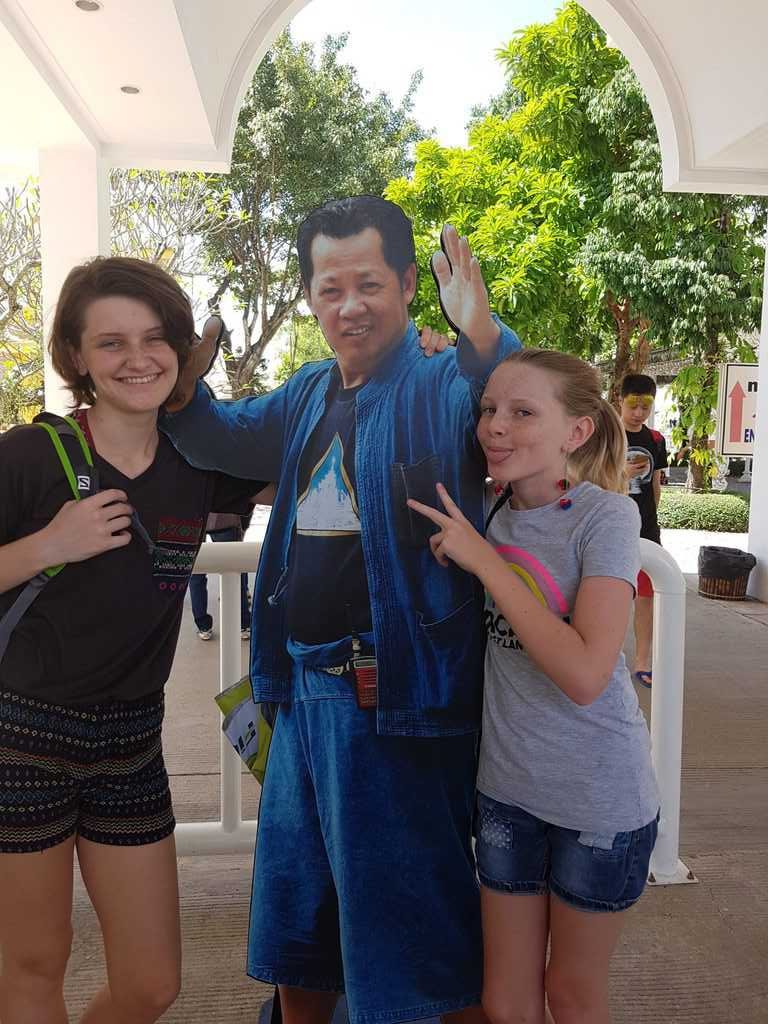
We learned that the temple was due to be finished in 2070. Say what?! This was similar to Sagrada Familia, in Barcelona, which will be under construction for more than 100 years by the time it is finished in 2026. I vowed to return to Barcelona to see the finished product, but I told the kids I could not make any promises about my ability to come to Thailand to see this temple when I am 100 years old, in 2070. We discussed spreading a few of my ashes there but then the conversation just got weird so we stopped. I think that was when Zoe changed the subject to overfishing, which she is learning about in her Marine Zoology class. We love that she’s learning – and now passionate about – overfishing, but can we focus on the temple here, please? Homeschoolers have eclectic conversation topics. At weird times.
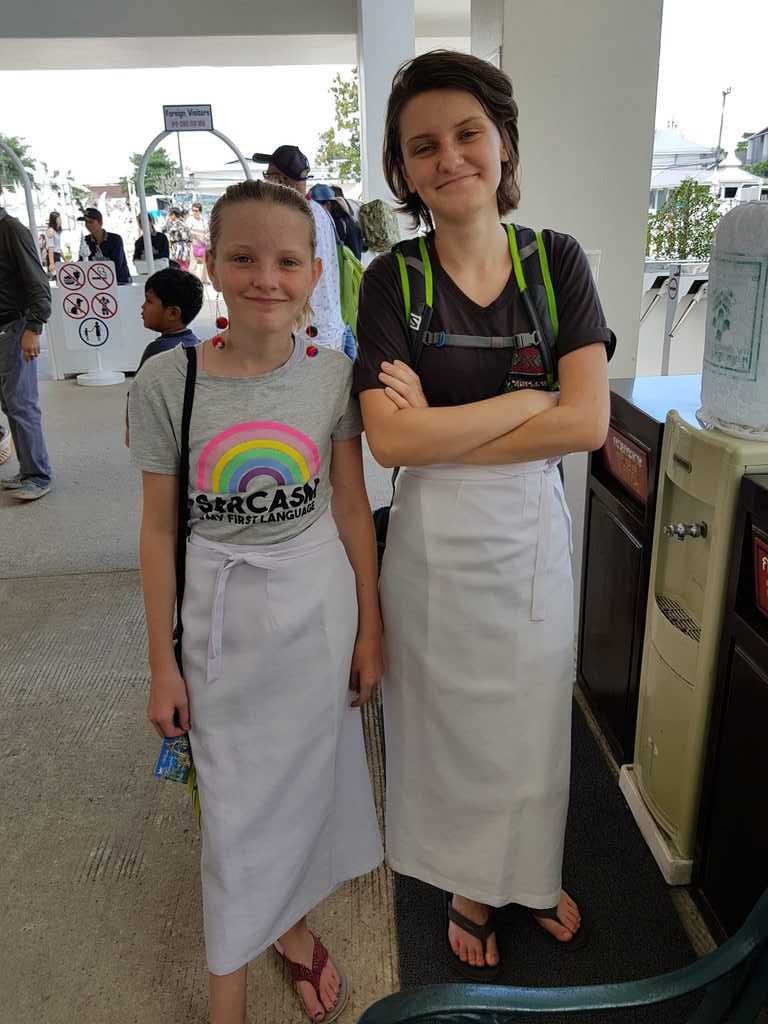
Structures And Symbolism
Time for your homeschool class in Buddhist Temples. There may or may not be a quiz at the end. Spoiler alert: no quiz. We don’t do quizzes at The Shermano Academy of Worldschooling.
Every detail of the white temple carries meaning and encourages the visitor to reflect on the Buddhist teachings that show the way to escape from the worldly temptations, desires and greed and focus on the mind instead.
The bridge of “the cycle of rebirth”: The ubosot, the main building of the white temple, is reached by crossing a bridge over a small lake. In front of the bridge is a circular area with hundreds of reaching hands that symbolize desire. This area represents human suffering and hell. The bridge towards the ubosot, called the bridge of “the cycle of rebirth” signifies the crossing over from the cycle of death and rebirth into a state free of suffering. It symbolizes the way to happiness by overcoming worldly things as temptations, greed and desire.
Next to the lake stand two very elegant Kinnaree, a creature from Buddhist mythology, half human, half bird.

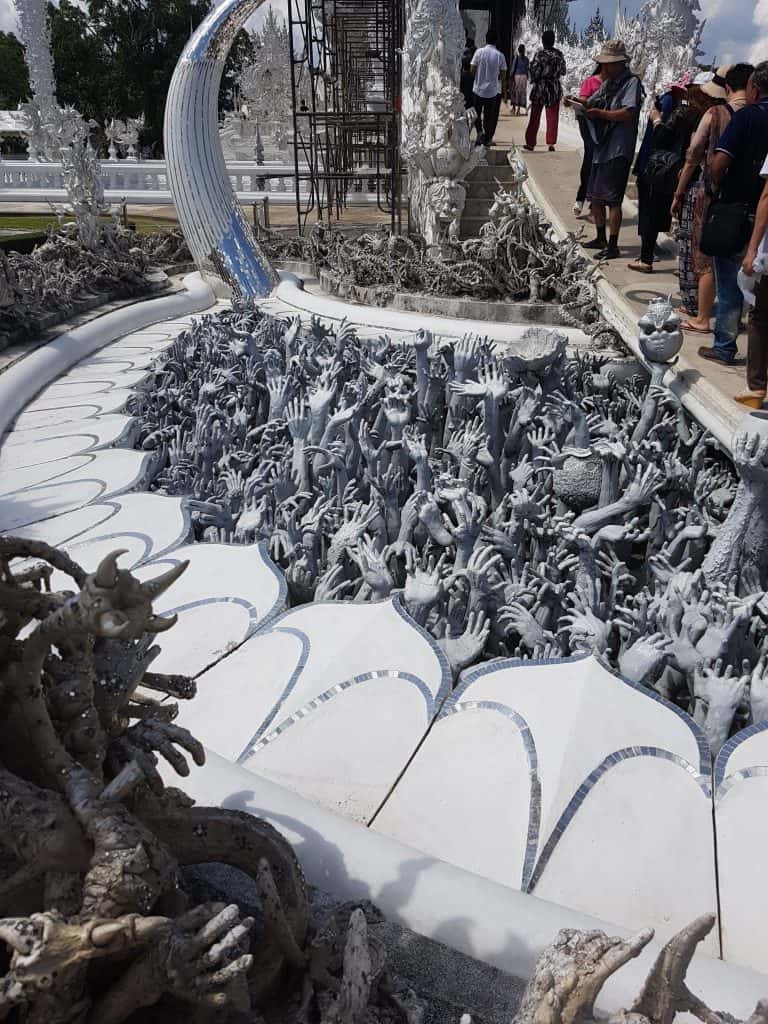
The “Gate of Heaven”: After crossing the bridge the visitor arrives at the “Gate of Heaven” guarded by two huge creatures that represent Death and Rahu, who decides over men’s fate. At the end of the bridge in front of the ubosot are several Buddha images in meditation.
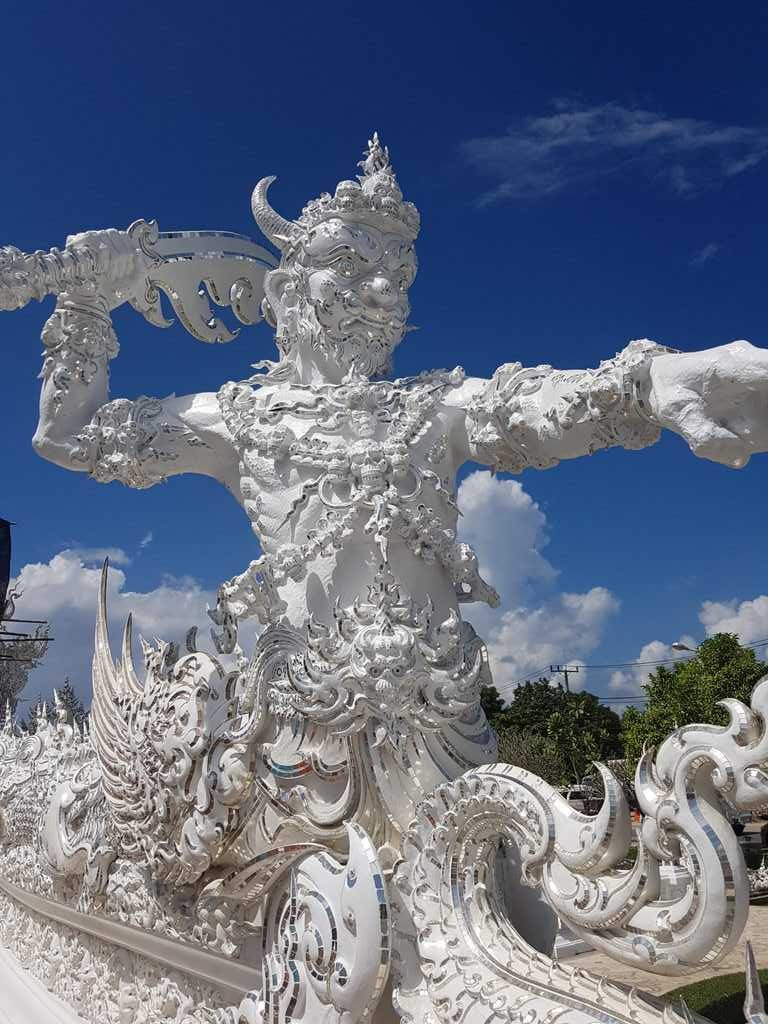
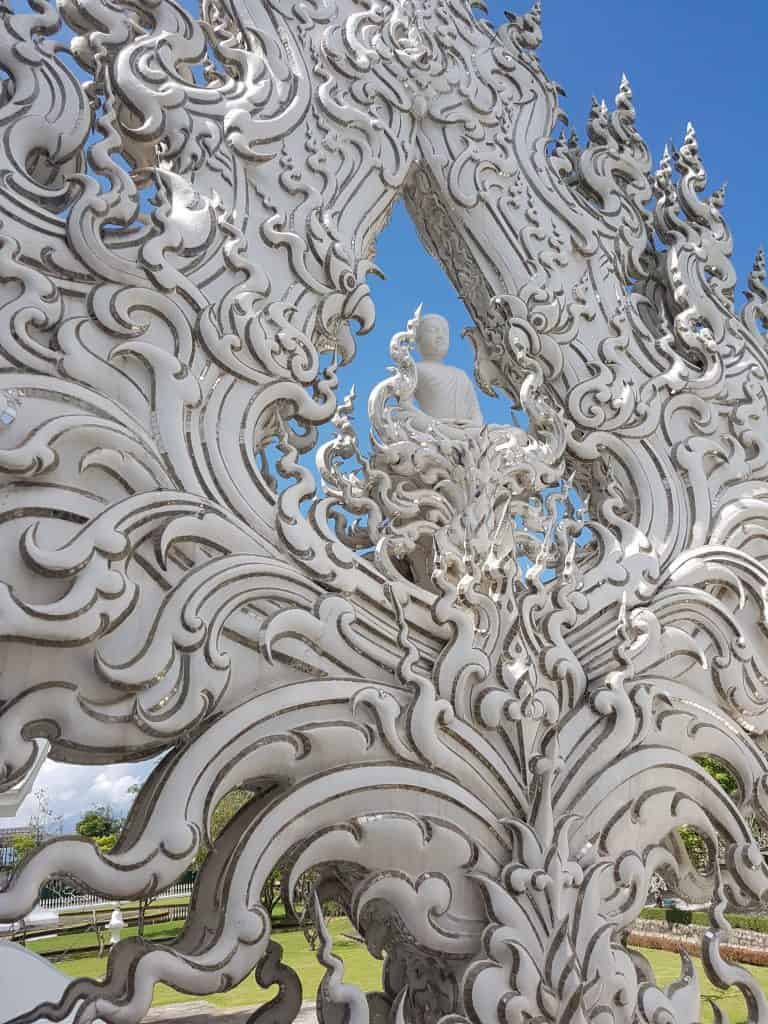
The ubosot: The most important building of the Wat Rong Khun, the ubosot or ordination hall is an all white building with fragments of reflective glass in the plaster. The very ornate ubosot shows some design elements of classic Northern Thai temples like the three tiered roof and stylized Naga serpents on the barge boards.
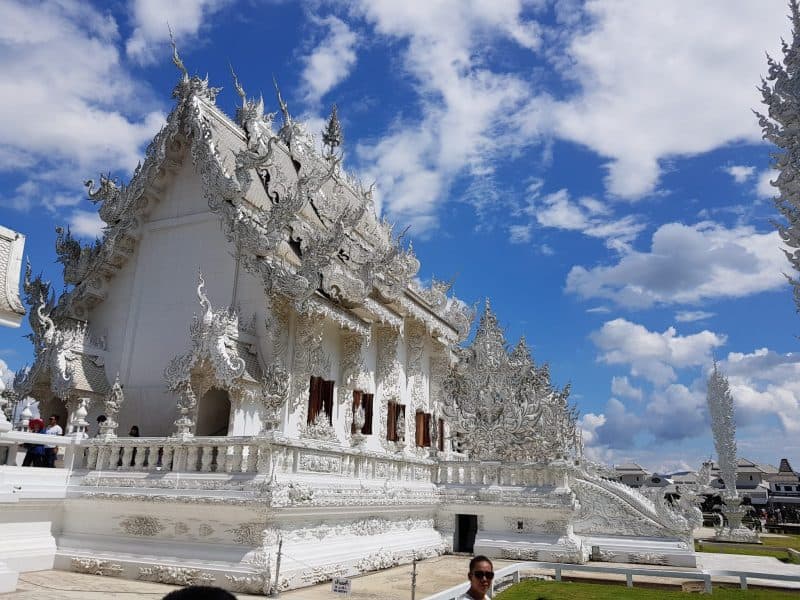
Whereas the murals of many old temples depict scenes from Buddhist stories, the walls of the white temple contain colorful murals that depict modern representations of good and evil, contemporary figures like Batman, Spiderman and Elvis, villains and superheroes from movies and comics and even spaceships. On the back wall of the ubosot is a golden mural of the Buddha, a few images of the Buddha in front of it.
There was no photography allowed inside this building, as Zoe pointed out to one tourist who was not following instructions. Here are a few more scenes from outside.
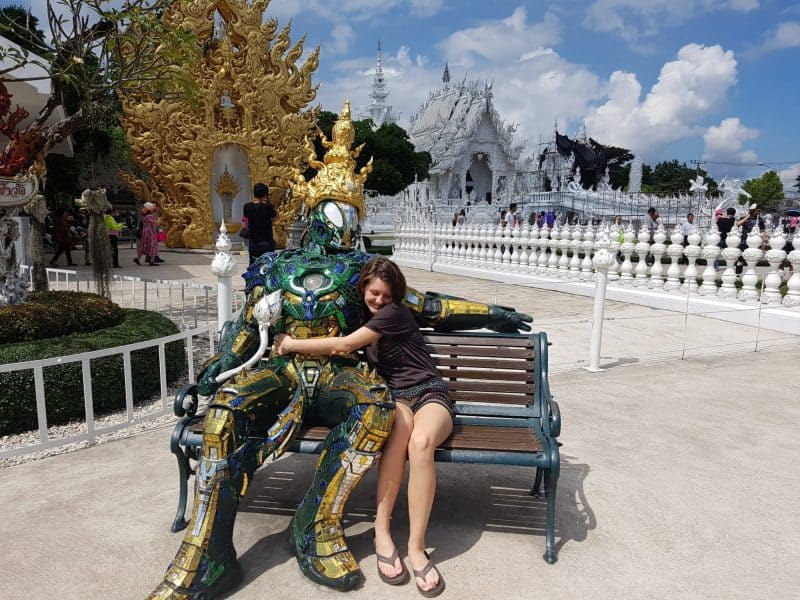
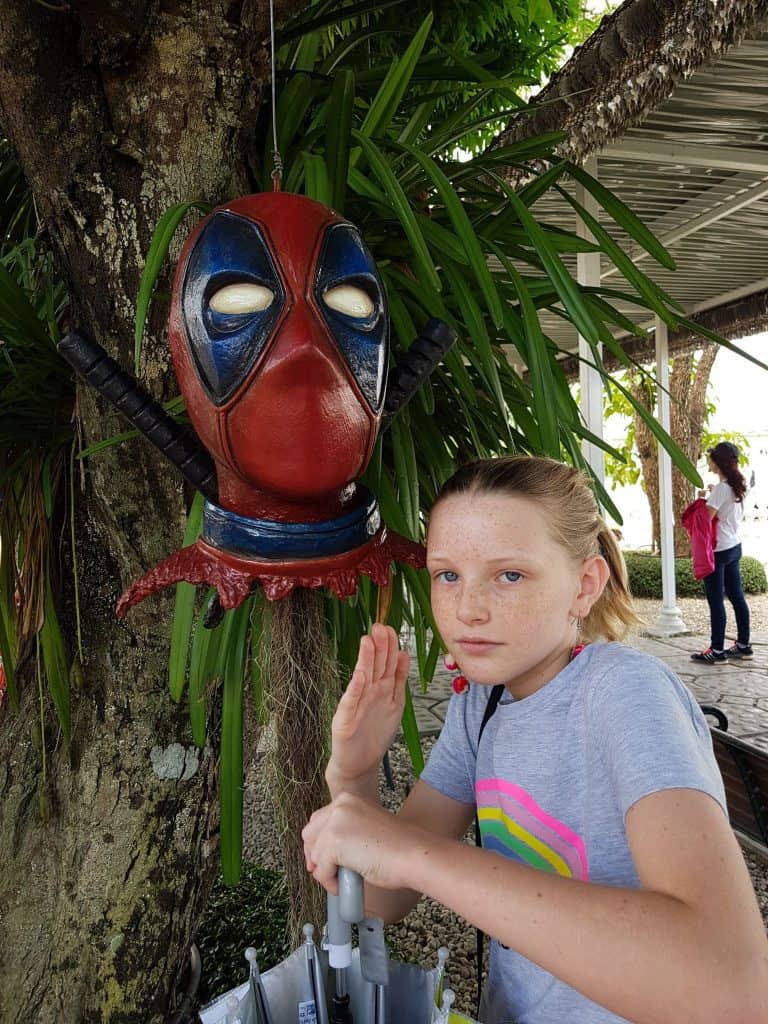
The golden building: A structure that stands out because of its color is the rest rooms building. Another very ornately decorated structure, this golden building represents the body, whereas the white ubosot represents the mind. The gold symbolizes how people focus on worldly desires and money. The golden building represents the idea to make merit and to focus on the mind, instead of material things and possession.
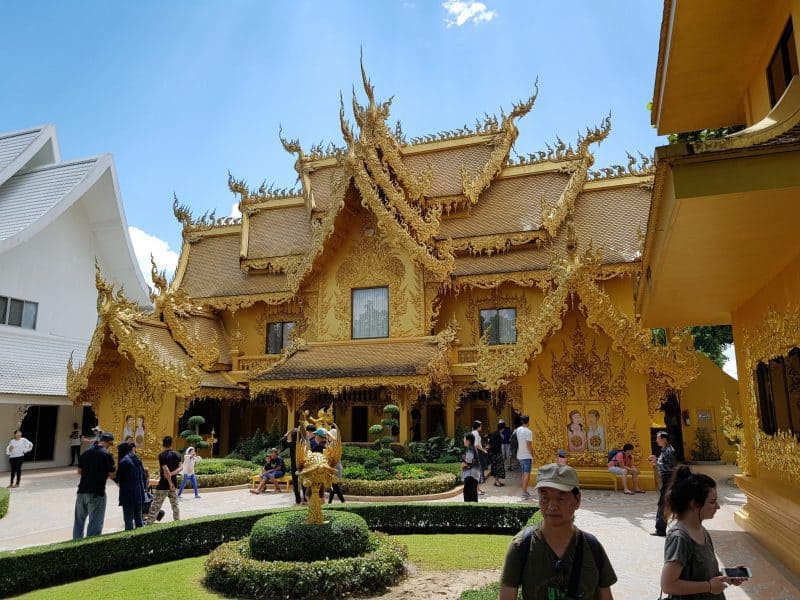
Other structures: Around the temple grounds are several concrete “trees” with thousands of medallions hanging down from them. For 30 Baht ($1USD) you can add yours with your name written on it.
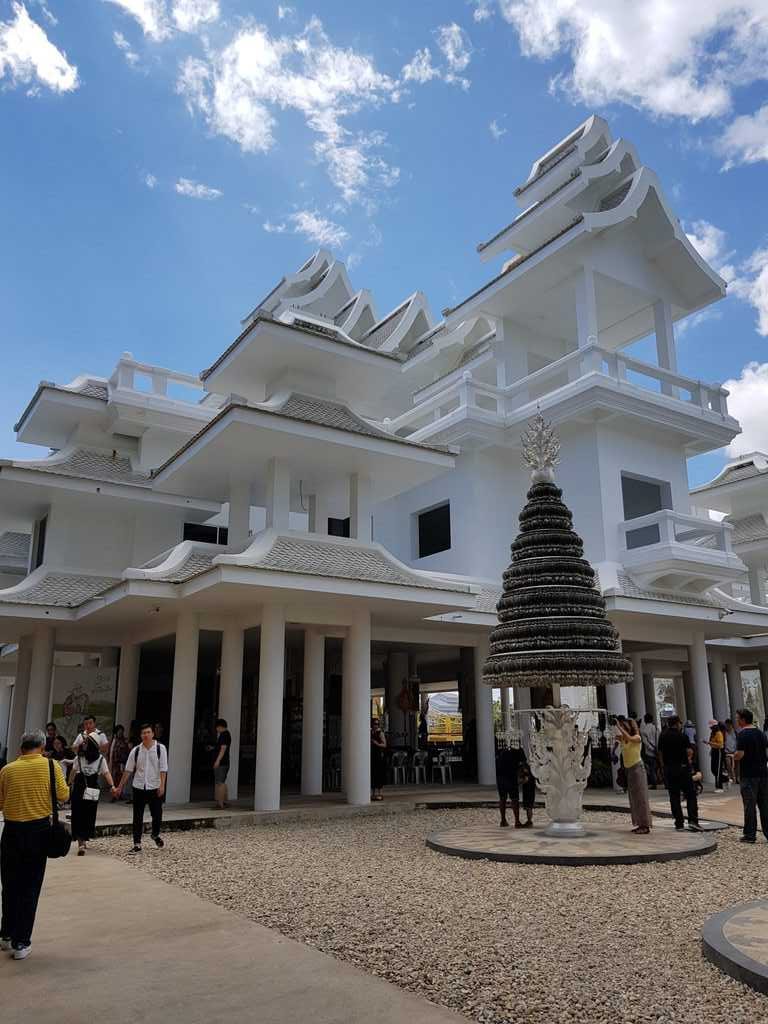
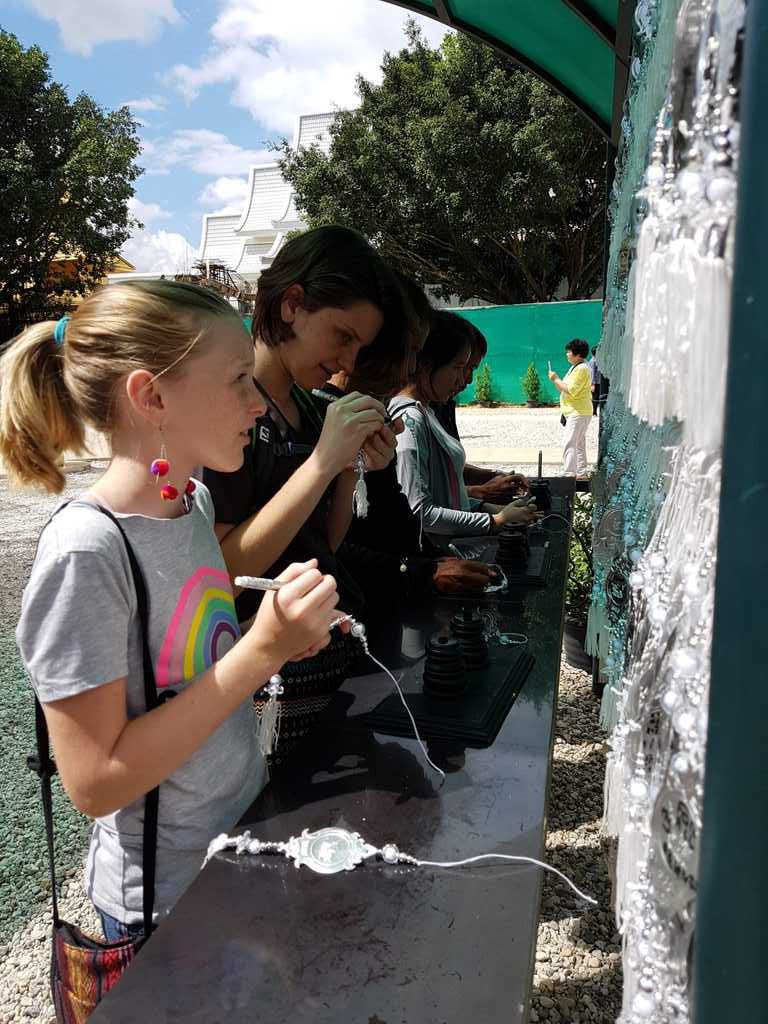
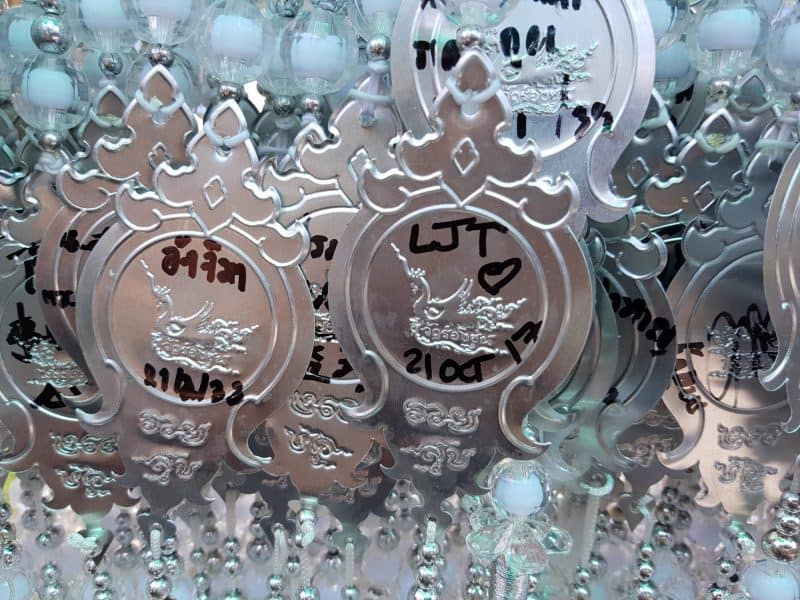
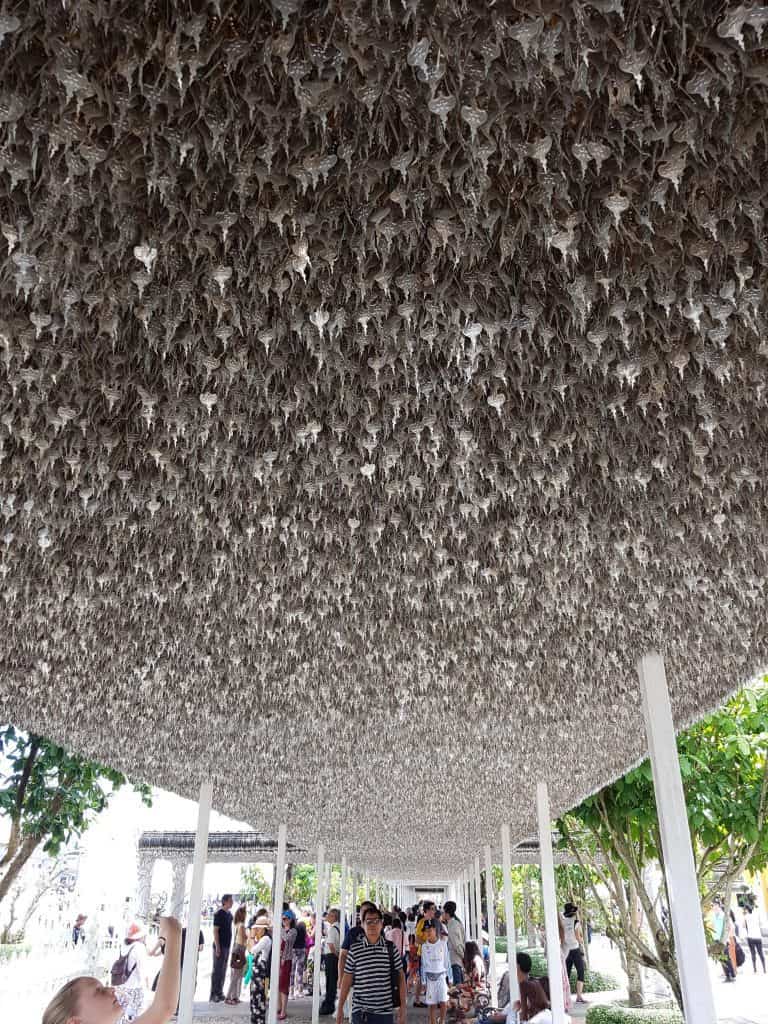
All’s Well That Ends Well
Despite the early wake and departure hour, we really enjoyed our day at the temple and I managed to get an “I’m glad we went” out of the kids. Or maybe that was just my own echo.
